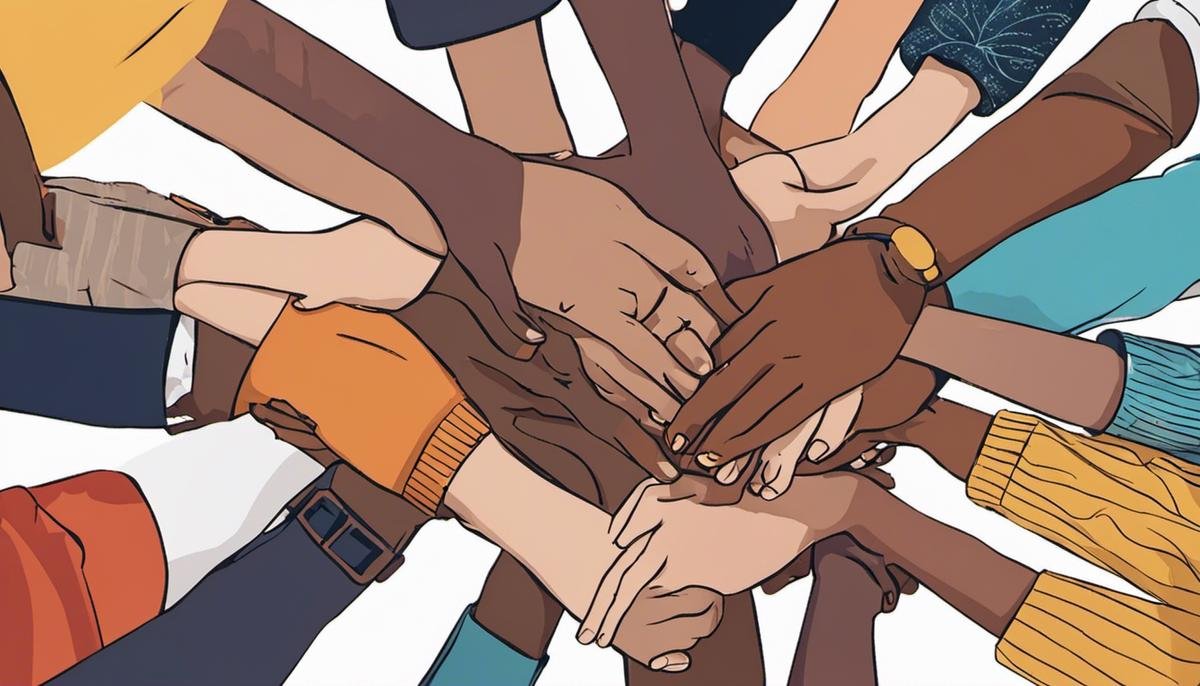
Life, as we know, is filled with variations, shaping a colorful mosaic of human possibility and uniqueness. Among these, Autism Spectrum Disorder stands as a complex layered condition that intrinsically shapes the lives of those affected and their families. In our journey to foster greater awareness and understanding, this exploration will delve into the nature of Autism, identifying its signs and symptoms, and examine its impact on communication, social interactions, and behaviors. We’ll illustrate these concepts with real-life examples and experiences to strengthen empathy – to truly see the world through an autistic child’s eyes. Furthermore, our discussion will extend beyond understanding to actionable measures, practical strategies families can adopt to enhance the quality of life for their autistic child, ranging from structured routines, sensory play, a safe environment to visual aids.
Understanding Autism
Understanding Autism: A Closer Look at Its Impact on an Individual’s Life
When discussing the subject of parenting, it’s vital to dive deep into every aspect that influences a child’s growth and development. Among these, a crucial topic that needs our attention and understanding is Autism Spectrum Disorder (ASD). Far too many misconceptions surround this complex, lifelong developmental disorder, so let’s clear those clouds of confusion and bring light to what Autism really is.
Autism is a neurological condition present from early childhood, characterized by different degrees of difficulties in social interaction and communication along with narrow and repetitive patterns of behavior and interests. It’s important to remember that Autism is a spectrum disorder, which means that no two individuals with Autism will have the same set of behaviors or symptoms. The manifestation can vary widely from person to person, making it critical for us to respect these differences and understand the unique challenges and abilities of each individual.
How does Autism impact an individual’s life, you ask? Well, it’s deeply interwoven into their everyday activities, interests, and behavior.
In terms of communication and social interaction, individuals with Autism may experience challenges in understanding non-verbal cues, maintaining eye contact, sharing of interests, and establishing peer relationships. They might have difficulty in expressing their emotions or understanding those of others, which makes social situations challenging.
Their behavior, on the other hand, could demonstrate an intense fascination with certain topics or activities, alongside routine-dependent actions. The need for predictability might be high, and disruptions to these routines can result in heightened stress or anxiety.
This unique worldview can present learning challenges. Traditional methods may not be beneficial, necessitating adaptive teaching techniques. But they can also excel remarkably in their areas of interest, often possessing incredible attention to detail, obtaining a wealth of knowledge in their preferred domains.
Understanding the impact Autism has on an individual’s life is fundamental to dispelling myths and fostering acceptance. It guides us to cultivate safe, supportive environments that empower these individuals to reach their full capabilities and serve as a community that acknowledges and appreciates their unique perspectives.
Our role then, as informed parents, fellow humans, and nurturing guides, is to pave the way for inclusivity, patience, understanding, and a limitless supply of love. No matter the difficulties they face or what the community must learn and unlearn, the human spirit’s resilience shines forth and above all, bringing hope for an accepting society where everyone is recognized and valued for their unique selves.
So let’s educate, empathize, and embrace the journey of individuals with Autism. Sharing this understanding is the first step in crafting an inclusive world that recognizes the brilliance in every hue of the human spectrum. As architects of the future, the endeavor is ours to mold a world that lovingly accepts, includes, and thrives in diversity.

Strategies for Improving Quality of Life
Enriching Life Perspectives: Proactive Strategies for Parents of Autistic Children
Living with a child who has Autism Spectrum Disorder (ASD) weaves a unique tapestry of challenges and rewards. Each day presents an opportunity for growth, bonding, and instances of joy that tighten the familial bond. For parents navigating this journey, strategies that enhance the quality of life for their child can make all the difference. Let’s dive in and explore some of these strategies.
Prioritizing Communication
Effective communication lies at the heart of understanding the world of an autistic child. Integrating various communication techniques—from body language, visuals, and sign language to technology-assisted tools—is instrumental in embracing their communication style. Try to focus on your child’s strengths, not their deficits, as this can encourage more effective interaction.
Creating a Structured Environment
Individuals with ASD often flourish in a structured environment that provides predictability and minimizes stress. Adapting your home and establishing routines to cater to your child’s unique needs can significantly improve their security and well-being. A sensory-friendly space, for instance, can mitigate common overstimulation issues.
Fostering Social Skills
Though ASD may impact social interaction, fostering social skills is still crucial. Encourage any form of social engagement, from parallel play for younger children to supervised group activities for older ones. Remember, every step counts.
Promoting Independence
Equipping your child with life skills is an essential aspect of fostering independence. It’s about celebrating small victories, whether it’s tying shoelaces, setting the table, or even making breakfast. Encourage these life skills as a part of everyday routines to boost confidence and independence.
Incorporating Therapies
When appropriate, various therapies like Applied Behavior Analysis (ABA), Speech Therapy, or Occupational Therapy can significantly enhance an autistic child’s life. These therapies can provide coping mechanisms that lessen certain autistic traits, enhancing the child’s potential to enjoy a fruitful and independent life.
Encouraging Interests
Diving into a child’s interest isn’t just rewarding; it can also be therapeutic. Be it music, art, nature or mathematics; nurturing these interests can provide a unique window into their world. Plus, it’s also an excellent bridge for communication and interaction.
Caring for the Caregivers
As nurturers and primary caregivers, parents must remember to take care of their own well-being. Stress management and self-care are as imperative as other aspects of supporting a child. This ensures you remain a rock for your child, offering the best care possible.
Cultivating a Supportive Community
Finally, cultivating a supportive community can be immensely beneficial. Engaging with parent support groups provides a venting outlet, and a wealth of shared experiences and practical advice. Advocating for inclusivity and acceptance within your local community also creates a more nurturing environment for your child to flourish.
By adopting and integrating these strategies, parents can significantly enhance the quality of life for their child with ASD. As with all things parenting-related, it’s about patience, compassion, and the tireless pursuit of providing the best for your child. Remember, every day may not be good, but there’s something good in every day. So, stay the course and cherish the journey.

Family Impact and Support
Autism is often dubbed a ‘spectrum disorder’ because its characteristics and impact can tremendously differ from person to person. Some experience minimal challenges and live with relative independence, while others may require substantial assistance with daily life. Beyond its impact on individuals, Autism also notably influences family dynamics, adding another layer to the responsibilities of parenthood and sibling relationships.
Undoubtedly, the addition of Autism to a family’s experience can initially bring about an array of emotions – fear, confusion, and even grief. But with time, understanding, and the right support, families learn to adapt, accommodating their loved ones on the Autism spectrum in the most nurturing and empowering way possible.
Keeping a familial bond strong calls for adjustments and flexibility. Household routines might need to be structured in a way that minimizes unpredictability, a common trigger of distress in those with Autism. As a sibling or parent, learning to communicate effectively with a family member who has Autism is critical. It helps build better bonds and imparts an understanding of their unique perspective of the world.
The ripple effect of Autism within a family network extends to the immediate community interaction – schools, friends, and neighbors. Raising an Autistic individual can sometimes require extra support from the outside world, underlining the need for a well-knit, understanding community. This remains a crucial aspect of any Autism family’s journey – to know they are not alone, that there’s an array of services and galvanized communities out there ready to help.
As a start, local special needs support groups can be a lifeline of practical advice, emotional reassurance, and resource sharing. They can provide guidance on various aspects – from diet plans to therapy options and schooling choices. Allies form in the shape of teachers, therapists, and even good-hearted neighbors who acknowledge the uniqueness of Autism and extend their understanding.
Online platforms can also aid in amplifying the reach of this support network. Numerous digital platforms, blogs, webinars, and even social media groups are dedicated to spreading Autism awareness and fostering an inclusive community. They also provide practical support for families, whether it’s advice on managing behavioral issues or how to navigate available government resources.
One cannot downplay the importance of professional support either. Therapists, counselors, and social workers who specialize in Autism are pivotal in helping families understand Autism better and guide them through their journey. The assistance here can range from helping the individual with autism develop cognitive and social skills to aiding parents to manage stress and adapting to the demands of autism-friendly parenting.
Additionally, programs like respite care often provide necessary breaks for family members, preventing caregiver burnout. These support systems also come with formal training that equips family members with the necessary tools to navigate the challenges of Autism, imparting them the confidence they require to thrive in their new normal.
In conclusion, Autism does indeed redefine family life dynamics, sometimes in ways that might initially seem overwhelming. But with solid support systems in place, families can constructively work their way through Autism, keeping the needs and prosperity of their loved ones at the forefront always. By fostering understanding, acceptance, patience, and love, both within their family and their community, they facilitate an enriching environment that encourages their Autistic family members’ growth, independence, and happiness.

Autism-Friendly Activities & Inclusive Education
Composing an Inclusive Space for Children with Autism: Delving into Engaging Activities and Education
One size does not fit all, certainly not when it comes to education. Children with Autism Spectrum Disorder (ASD) require a schooling approach that not only meets their unique learning needs but also helps them feel safe, cared for, and included. And that inclusive touch should not be limited to the four walls of schools; it should extend to every nook and corner of their lives.
Amidst the everyday hustle and bustle, families are always looking for boutique amusement solutions that are fun, inclusive, and conducive to learning. When a family member has autism, this search often takes a fresh turn, bringing enrichment, engagement, and inclusivity to the forefront. Here’s a glimpse of some unique, enjoyable activities for families:
Board Games: From the simple Snakes and Ladders to the strategic Chess, board games are a tremendous indirect learning tool. They facilitate the development of cognitive skills, patience, decision-making, and turn-taking.
Outdoor Sports: Be it cycling, hiking, or simple walk in the park, outdoor activity is therapeutic. It aids fine motor development, physical fitness, exploratory skills, and provides a much-needed break from routine.
Arts and Crafts: A button collage, a sand art piece, or a crayon sketch, crafting can be a soothing experience. It encourages creativity, concentration, hand-eye coordination, and gives a sense of achievement.
Cooking Together: Preparing a simple fruit salad or baking cookies can be a fun-filled and learning experience. It fosters life skills, following instruction, sensory experience, teamwork, and a reward at the end – a tasty treat!
But how to ensure inclusive education for children with Autism? Here’s your guide:
Individualized Education Program (IEP): An IEP is a legal document developed for public school children who need special education. The program, tailored to the individual’s needs, ensures they are not left behind.
Assistive Technology: The use of tailored technology, such as learning apps and communication tools, can bridge the gap often encountered by children with Autism in learning environments.
Understanding Sensory Needs: People with Autism often have different sensory experiences. Hence, creating an environment that caters to these needs can significantly improve their learning.
Role-play and Social Stories: Role-play and visual story-telling are effective tools to teach social skills. They help rehearse situations and understand different perspectives in a secure environment.
Peer Buddy System: Having a peer buddy not only aids academic understanding, but also enhances social interaction, acceptance, and all-inclusive learning.
Teacher Training: It’s crucial that teachers are trained in Autism education to understand, accept, and bring out the best in these kids.
Supportive Services: Integrating speech therapy, occupational therapy, social skills training, and counselling within the curriculum helps address the different facets of Autism under one roof.
Igniting inclusion in education for children with Autism is not an overnight task. It’s a journey that families, schools, and communities embark on together. So, roll up your sleeves! It’s time to embrace diversity, wave the wand of inclusivity, and build a future where no child is left behind. After all, every child is quirky, every child is novel, and indeed, every child is unique in their way. In the real essence, that’s what truly makes our world a vibrant place.

At the heart of this narrative is a powerful message of inclusive love, acceptance, and empowerment. Recognizing and celebrating variations like Autism underscores the importance of inclusivity in our everyday realities – at home, in schools, and in the community. Extending beyond the limitation of labels, we highlighted a blend of enjoyable family activities and advocated for inclusive education to bolster an autistic child’s learning experience. Additionally, we recognized the impact Autism has on a family’s dynamics and rallied for comprehensive support systems. The challenge is arduous, but with understanding underpinning our actions, it is our shared responsibility to enable those living with Autism to lead a fulfilling life, illuminated by the brightest hues of joy, learning, and love.




